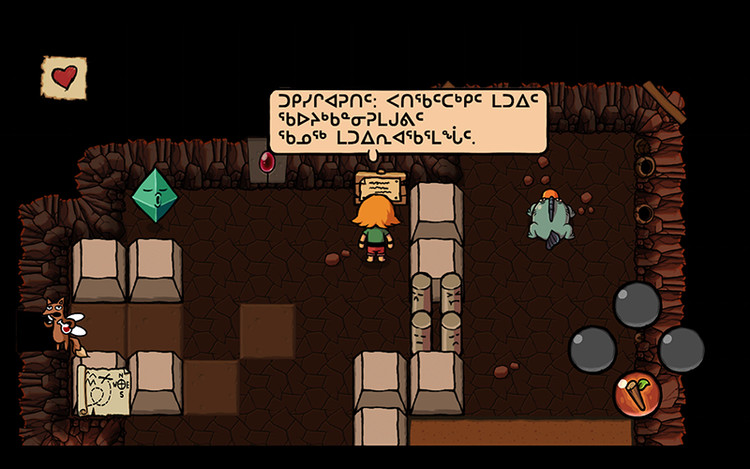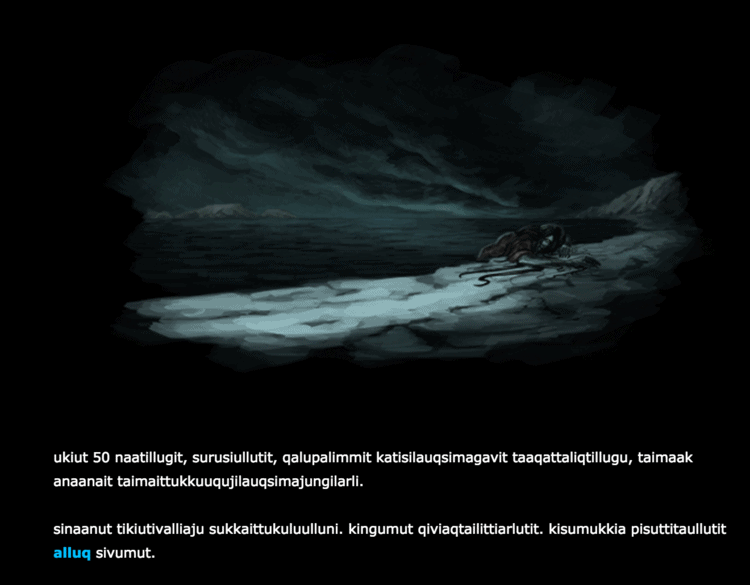Pinnguaq is extremely excited to release an Inuktitut Syllabics word replacement extension for Google Chrome today. By activating this extension, your browser will automatically replace any Inuktitut Syllabics with Roman Orthography on any site you visit. Instructions on how to install the extension are available here and we’re looking at the feasibility of expanding this extension to Edge and Firefox in the near future.
Why is this Chrome Extension Important?
This post specifically will deal with the “why” for this release. Why release an extension that converts syllabics to orthography? Syllabics look awesome! I’d be lying if I said how “cool” syllabics look isn’t one of the main things that come up when developers agree to let us translate their games into Inuktitut. For someone who doesn’t know Inuktitut and doesn’t need to, it adds a unique and fun character set to their game/product without much effort. But for the rest of us, their relevance is increasingly waning.

For those not familiar, Inuktitut syllabics were adapted from Cree syllabics in order to translate the bible. They’ve since gone on to become arguably the dominant form of writing for Inuit people. In the last year, the Government of Nunavut has announced it wants to move away from syllabics in the education system and this move is supported (recommended) by the national Inuit organization, Inuit Tapariit Kanatami (ITK) in a March 2015 report.
There are a lot of good reasons to abandon syllabics. It creates two systems of writing (syllabics and orthography), it allows for standardization, and the reality is, syllabics is a writing system imposed upon Inuit. The report in March 2015 read:
“Existing writing systems have been imposed on us. Canadian Inuit now have an opportunity to choose and create our own unified writing system…”
Increasingly it appears that move will be towards Orthography.
It should be noted this transition will likely be the most difficult for elders who grew up on syllabics and are among the most literate in the territory today with written syllabics. It is why (we assume) the Government is proposing a gradual change that starts in the education system. It is why we will do our best to make Inuktitut available in both syllabics AND orthography and to provide choice.

Beneath Floes run through the “Syllabics Translator” extension in Google Chrome.
Moving Away from Syllabics
Speaking as a non-Inuit person, there are benefits to moving away from syllabics as well. To welcome new speakers (or in this case, readers) to the language, syllabics add a second barrier of language that must be mastered to be able to participate in the language itself. Sure, you may know that Nunavut means “Our Land”, but seeing it in syllabics and learning what each symbol represents is like learning a second type of Inuktitut. For a language at risk this type of barrier to new speakers prohibits quick learning.
As a non-Inuktitut speaker, when you are surrounded by Inuktitut every day you begin to recognize patterns and are able to pick up words and meaning quickly. Like anything, learning is constant and quick with total immersion. As syllabics are moved away from, that learning will be better facilitated through reading/text as well.
There are a lot of good reasons to move away from Syllabics and we welcome the public shift towards a standardized written language. Syllabics look cool, no doubt. But for those who want to really understand what is going on, we hope this tool can help.


